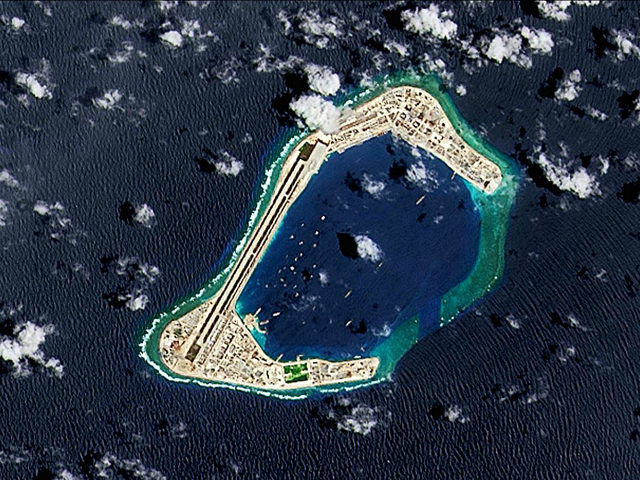China recently installed anti-ship cruise missiles in the South China Sea, sparking concern and a warning of “consequences” from the United States.
CNBC reported on Wednesday China had “quietly installed anti-ship cruise missiles and surface-to-air missile systems on three of its fortified outposts west of the Philippines in the South China Sea” in a move designed to shore up Beijing’s claim over the disputed territory.
According to U.S. intelligence sources, “intelligence assessments say the missile platforms were moved to the outposts in the Spratly Islands within the past 30 days.”
“We have consistently called on China, as well as other claimants, to refrain from further land reclamation, construction of new facilities, and militarization of disputed features, and to commit to managing and resolving disputes peacefully with other claimants,” a Pentagon official told the outlet on the report’s publishing.
“The further militarization of outposts will only serve to raise tensions and create greater distrust among claimants,” he continued.
On Thursday, White House Press Secretary also warned of “consequences” over the ongoing military buildup.
“We’re well aware of China’s militarization of the South China Sea,” Sanders said at a press briefing. “There will be near-term and long-term consequences.”
Over recent years, China has aggressively expanded its naval and coast guard presence in an attempt to show military strength over disputed territory, where Brunei, Taiwan, Malaysia, Indonesia, the Philippines, and Vietnam also make claims.
The territory, which contains over 200 specks of land, remains a popular gateway for global sea routes where around $3.4 trillion in trade travels through every year, meaning any owner would hold significant economic power.
In March, the military began their annual spring air force drills in the South China Sea, involving the use of powerful military aircraft such as H-6K bombers, Su-30, and Su-35 fighters.
Despite technically remaining neutral in the conflict, the U.S. recently sailed USS Carl Vinson, a massive nuclear-powered aircraft carrier, around the territory to show support for regional allies.
President Donald Trump has maintained that he would be willing to negotiate with China or acts as a mediator over the ongoing, an offer immediately dismissed by Beijing as unnecessary foreign meddling.
“If I can help in any way, I’m a very good mediator and a very good arbitrator,” Trump said last November during a meeting with Vietnam president Trần Đại Quang. “I have done plenty of it from both sides. So if I can help you, let me know.”
Follow Ben Kew on Facebook, Twitter at @ben_kew, or email him at bkew@breitbart.com.

COMMENTS
Please let us know if you're having issues with commenting.